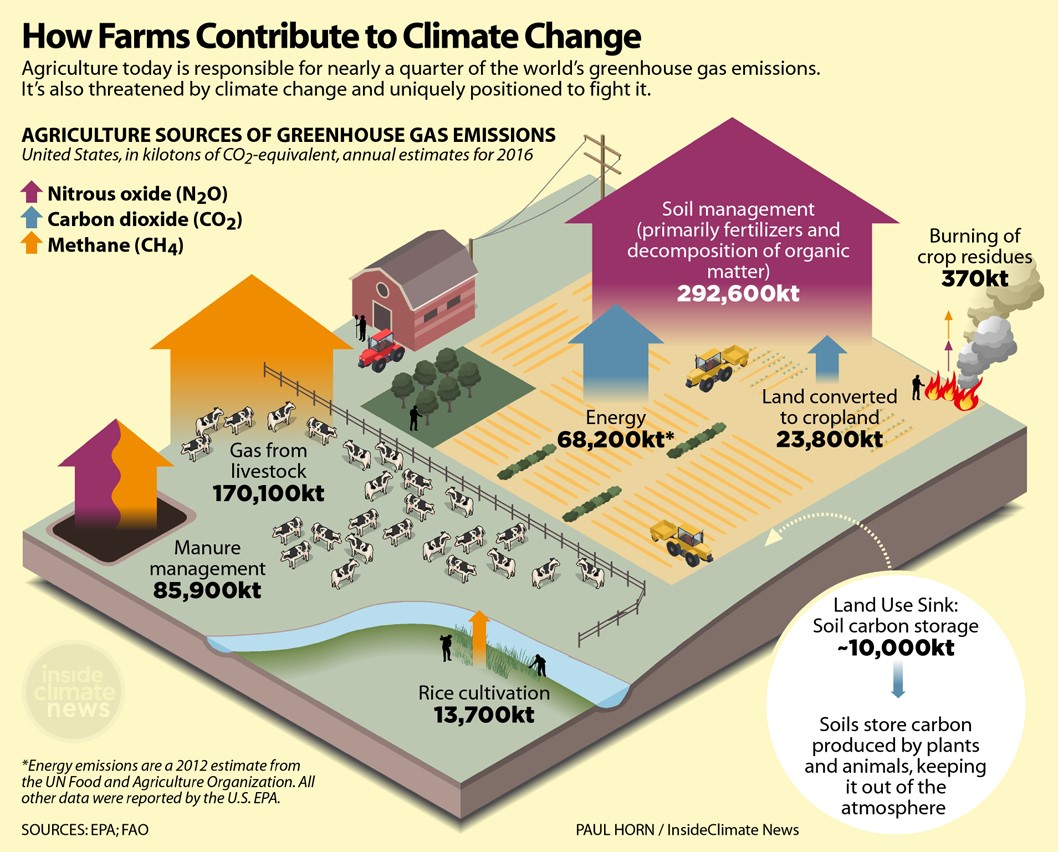Farming For a Better Climate is all about finding ways to maintain or increase profits while slowing climate change. Many farming practices release gases that trap heat in our atmosphere, called greenhouse gases. While agriculture accounts for just about 10% of the greenhouse gases released in the US, and is only one of many sectors driving climate change, it has the potential to be a sizable part of the climate solution.
Lately, state and national lawmakers have been talking about finding ways farmers can provide natural climate solutions, and even help them get paid for doing it. Private companies are popping up to broker the exchange of carbon credits and offsets. There’s a lot of buzz around phrases like climate-smart farming, carbon farming, and regenerative farming. But what do those actually mean? What practices are included? Do they actually benefit the climate? What would farmers need to do to get paid? What are the risks?
In this series, we will look at what the science says about how specific farming practices can reduce greenhouse gas emissions and even pull carbon out of the atmosphere and store it in the landscape. We will explore ways farmers can benefit–economically and environmentally–from adopting these various types of practices. We will even take a look at the current state of carbon markets, which are rapidly developing and often described as the wild west.
Whether we’re talking about increasing energy and water use efficiency, reducing inputs, or building soil health, there are many pathways to farming for a better climate, with some giving you more bang for your buck. Chances are, you or other farmers you know might already be doing some of these things. So, we invite you to follow along, tell a friend, and join us in exploring ways to farm for a better climate.
Graphic originally appeared in Why Farmers Are Ideally Positioned to Fight Climate Change, published by Inside Climate News (8/24/2018).

Farms in the US release three main heat-trapping gases: nitrous oxide, methane, and carbon dioxide. The arrows in this graphic show the agricultural activities that release each of these gases. The width of each arrow shows how much each practice contributes to climate change. The largest contribution comes from wet, fertilized soils, which release nitrous oxide. Most of these emissions happen in the spring, before germination or when plants are still small. The second largest source is methane belched up by livestock.
Farming a Better Climate is written in collaboration by the Purdue Extension, the Indiana State Climate Office, and the Purdue Climate Change Research Center. If you have questions about this series, please contact in-sco@purdue.edu.


